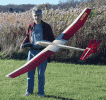


RF Cascade Workbook for Excel
RF & Electronics Symbols for Visio
RF & Electronics Symbols for Office
RF & Electronics Stencils for Visio
RF Workbench
T-Shirts, Mugs, Cups, Ball Caps, Mouse Pads
Espresso Engineering Workbook™
Smith Chart™ for Excel
|
 |
Mixer IP3 - RF Cafe Forums
|
smanoha
Post subject: Mixer IP3 Posted: Tue Nov 21, 2006 2:21 am
Captain
Joined: Tue Apr 25, 2006 2:01 am
Posts: 7
I am presently designing a resistive FET mixer and I have got a
couple of questions on the IP3 of the mixer
1. Can the Mixer IIP3
change with RF drive level as my simulations indicate?
2. How accurate
are generic GaAsFET and HEMT large signal models when it comes to predicting
intermodulation?
Top
IR
Post subject: Posted:
Wed Nov 22, 2006 7:19 am
Site Admin
Joined: Mon Jun
27, 2005 2:02 pm
Posts: 373
Location: Germany
Hello smanoha,
To answer your questions:
Quote:
1. Can the Mixer IIP3
change with RF drive level as my simulations indicate?
There
can be changes. The IIP3 is measuered in small signal, when you increase
the input signal level then the IIP3 normally degrades.
Quote:
How accurate are generic GaAsFET and HEMT large signal models when it
comes to predicting intermodulation?
Hard to answer on this
question. It all depends on how accurate the models are.From my experience
with GaAsFet models, usually the models are good enough to predict intermodulations
and P1dB compression point.
_________________
Best regards,
- IR
Top
smanoha
Post subject: UpdatePosted:
Wed Nov 29, 2006 1:20 am
Captain
Joined: Tue Apr 25,
2006 2:01 am
Posts: 7
Thanks IR for your reply. My problem was
that even at low power levels the simulated IP3 was a function of input
RF power. The software I am using calculates the OIP3 as P(fund)+IMR/2
which seems to be based on the fact that for every dB rise in P(fund)
the third order products rise by 3 dB. I realized yesterday, that in
my design the third order products were'nt rising at this rate.
I am now wondering if there is a theoretical basis for this 3 dB
rise in third order products for every dB rise in fundamental power
or whether it is just a thumb rule that engineers use?
Top
IR
Post subject: Posted: Wed Nov 29, 2006 1:32 am
Site Admin
Joined: Mon Jun 27, 2005 2:02 pm
Posts:
373
Location: Germany
This is not a rule of thumb but something
which is based on theory with a mathematical derivation behind. I suggest
that you will read more about it. You can find it in an amplifier design/RF
design text books.
The IP3 is a theortetical point (Which can
never be reached in practice) and the 3dB/1dB ratio is maintained in
low signal conditions to keep IP3 at the same value. So in the formula
when input power is sweeped, the values change accordingly in this ratio.
If your IM3 products don't follow this rule, that means that
you are reaching to compression point and small signal rules don't apply
anymore.
_________________
Best regards,
- IR
Posted 11/12/2012
|
 |
|

 |







